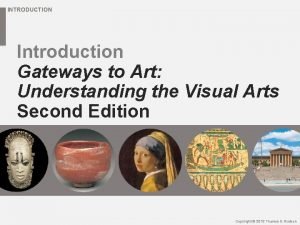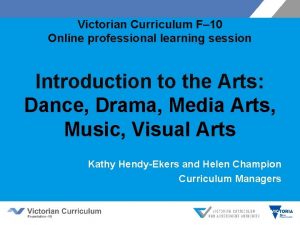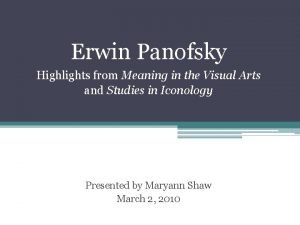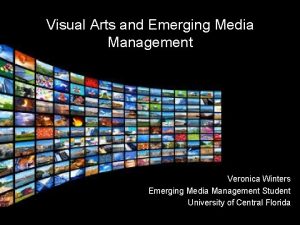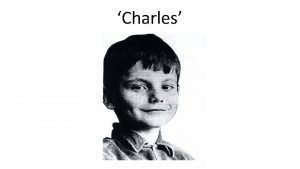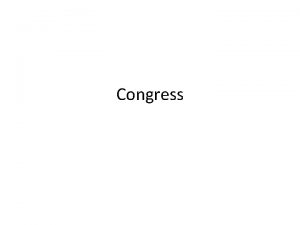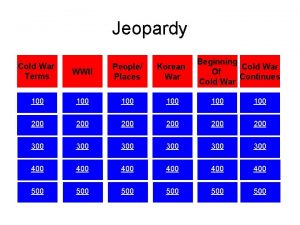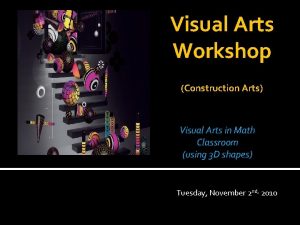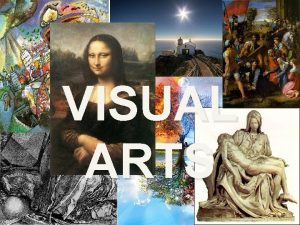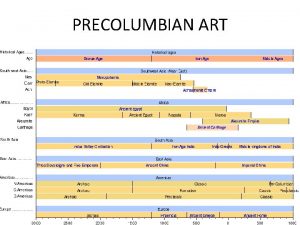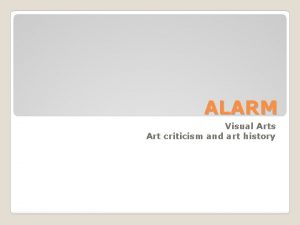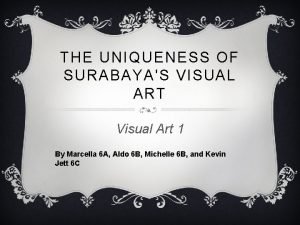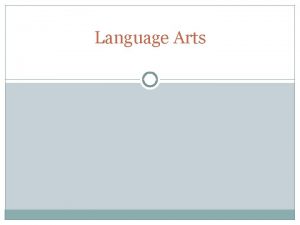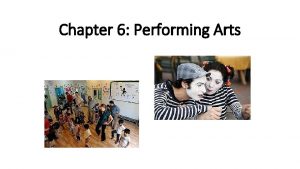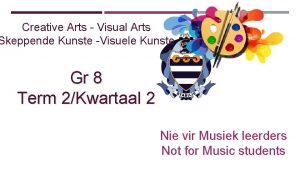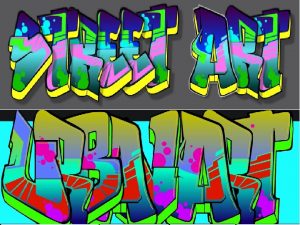Visual Arts Why Create Art Why Create Art



















- Slides: 19

Visual Arts Why Create Art?

Why Create Art? � There is no single answer, except to say that the need to create is one of the special characteristics of being human. � There is archaeological evidence for this need to create dating back at least 25, 000 years to the Venus of Willendorf sculpture. � While there is no one answer, we will go over several general purposes that art can serve.

Why? Artistic Expression � To communicate emotion, ideas or feelings.

Why? Artistic Expression � The Potato Eaters, 1885. Vincent van Gogh. Van Gogh Museum, Amsterdam. � Van Gogh wanted to depict life among the lowly as it was. � What do feelings, ideas or emotions do you think that the artist intended to convey about life among the poor?

Why? Artistic Expression

Why? Ceremonial � Art created to observe a ritual, for celebration or commemoration.

Why? Ceremonial � Tibetan sand mandalas are created from colored sand, usually over a period of several weeks. � They depict representations of Buddhist doctrine. � After completed, they are ritually swept up to symbolize impermanence.

Why? Ceremonial

Why? Functional Art � Functional art consists of everyday objects. � Examples could be pottery, basketry, and even architecture.

Why? Functional Art � Basket, c. 1920’s. Lucy Telles Smithsonian, Washington, D. C.

Why? Persuasive Art � This type of art promotes ideas or products. � Examples could include advertising, marketing, propaganda or ideology.

Why? Persuasive Art � We Can Do It, 1942. J. Howard Miller. � This poster was originally intended to boost worker morale. � It was later used by the feminist movement.

Why? Persuasive Art

Why? Narrative Art � Narrative art is used to tell stories, describe experiences, or document historical events.

Why? Narrative Art � Washington Crossing the Delaware, 1851. Emanuel Luetze. Metropolitan Museum of Art, New York. Oil on canvas. � This artwork documents the surprise attack Washington made in the Battle of Trenton, December 25 -26, 1776.

Why? Narrative Art

Why? Multiple Functions � Art does not have to fit into one category or another. � Art could serve several functions at the same time.

Why? Multiple Functions � Detail of stained glass window, 13 th century. Notre-dame de Chartres Cathedral, Paris. � Depicts the marriage at Cana. � This piece is both functional and narrative.

Why? Multiple Functions
 Creative arts drama grade 8
Creative arts drama grade 8 Gateways to art understanding the visual arts
Gateways to art understanding the visual arts Andreas carlsson bye bye bye
Andreas carlsson bye bye bye Visual art extended essay examples
Visual art extended essay examples Victorian curriculum visual arts scope and sequence
Victorian curriculum visual arts scope and sequence Seeing as reading in visual arts
Seeing as reading in visual arts Erwin panofsky meaning in the visual arts
Erwin panofsky meaning in the visual arts Emerging media definition
Emerging media definition Visual arts subject
Visual arts subject Victorian curriculum art
Victorian curriculum art Jika noel(create(q)) adalah 0 maka front(create(q)) adalah
Jika noel(create(q)) adalah 0 maka front(create(q)) adalah Prepare a standardized recipe of your choice
Prepare a standardized recipe of your choice Bahasa pemrograman konvensional
Bahasa pemrograman konvensional Dont ask why why why
Dont ask why why why Examples of physical function of art
Examples of physical function of art Why do people create structure and change governments
Why do people create structure and change governments Types of datum used in marking out
Types of datum used in marking out Who is narrating the short story charles?
Who is narrating the short story charles? Why did the framers create a bicameral legislature
Why did the framers create a bicameral legislature Brinksmanship/massive retaliation
Brinksmanship/massive retaliation

